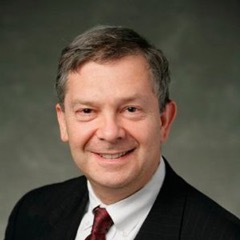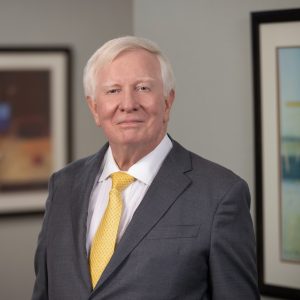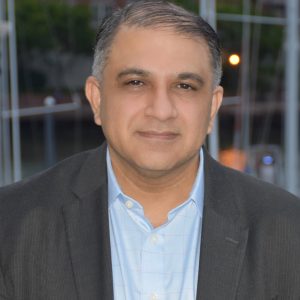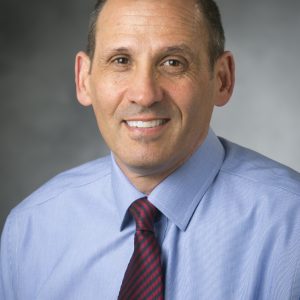CEO Leadership Series: Philip M. Sass, Chairman, President & CEO, Liquid Biotech USA, Inc.

INVESTING IN THE FUTURE OF CANCER TREATMENT
After co-founding and building Morphotek, Inc., a biotech company that specializes in developing biologics for the treatment of oncology, infectious and autoimmune diseases, and selling it to Eisai Co. Ltd., a Japanese firm, for $325 million in 2007, Dr. Philip M. Sass stayed with Eisai for seven years before looking for a new opportunity. He’s now embarked on his next challenge at the helm of Liquid Biotech USA Inc., a small company that he manages with Jeff Janco, his former roommate at the University of Miami. Dr. Sass handles the scientific side and the fundraising, while Mr. Janco handles the business and operations side of the organization.
Headquartered at the University of Pennsylvania’s Pennovation Center, Liquid Biotech is in the process of finding investors to fund the development of a proprietary cancer diagnostic and gene discovery platform. In an interview with Ashton Tweed, Dr. Sass explains how Liquid Biotech’s platform will help cancer patients and what he’s learned about raising funds in the biotech world:
You were in research for quite some time. How did you come to co-found Morphotek?
I always wanted to get back into drug discovery so I moved to this area to work in a company that was using the latest techniques to find antimicrobials, Magainin Pharmaceuticals. When Magainin started having difficulty after a failed NDA, we—Dr. Nick Nicolaides, Dr. Luigi Grasso and myself—decided to see if we could take advantage of a process to manipulate virtually any cell in vivo and start a company around the concept. We called our company Morphotek and termed the process morphogenics. Morphogenics is the ability to generate novel variant mutants and then through a selection process isolate those cells of interest. The morphogenic process has the advantage that there is no need to isolate and mutate a specific gene but we simply let the cell guide us through an “accelerated” evolutionary process. We were able to generate many enhanced traits with the process, including novel therapeutic antibodies.
What were your biggest challenges at Morphotek?
We were a small start-up so the biggest challenge was raising enough money to build the company. We ended up raising almost $90 million through a combination of angel, venture capital and business development. An often-overlooked avenue of raising money is using business development (BD). BD offers, first, a non-dilutive way to finance your organization and second, it is validation to new and current investors that the technology, or products, are valuable. In our case we started Morphotek as a platform company but post Series A financing, new investors that we were courting wanted a product in addition to the platform technology. Because our technology could be deployed to generate novel antibody therapeutics, we were uniquely positioned to be both a platform and a technology company. Which leads me to another valuable lesson as you build your business: Always be flexible in your thoughts, listen to what the market—in our case investors—is telling you and try to anticipate as you build your business.
Why did you leave Morphotek after Eisai acquired the company?
Eisai bought Morphotek in 2007 and I stayed on for seven years. I helped to build our staff from 40 or so when we were acquired to close to 200 FTEs, manage the construction and staffing of an $80M biologics pilot plant, and help to shepherd multiple antibodies from IND into clinical development. It was a great experience and I learned a lot, broadening my background to include startup to acquisition then working at a large, foreign owned pharmaceutical company. I left in 2014 to look at other companies I might be interested in starting or joining. I think it got to the point where it was just time to go back to a smaller company. There’s nothing wrong with a bigger company, but I really enjoyed the smaller company environment where you can make decisions more rapidly, some good and some bad but at least you can control your destiny—sometimes anyway!
How did the opportunity at Liquid Biotech come about?
Liquid Biotech comes out of the UPstart program at University of Pennsylvania and three physician-scientists actually scientifically founded the company; Dr. Steven Hahn, now at MD Anderson Medical Center in Houston, TX, Dr. Gary Kao and Dr. Jay Dorsey currently in the Radiation Oncology Department at the U. of Pennsylvania. The technology was developed from their labs and also a company called Oncolys BioPharma, Inc.
How does the Liquid Biotech technology work?
The technology provides the ability to enumerate circulating tumor cells from cancer patients from a non-invasive blood draw. Once we have drawn a cancer patient’s blood, we can isolate individual circulating tumor cells (CTCs) and then we can count the CTCs to determine if cancer is present, regressing or advancing based on CTC trends. What is as exciting to us as enumerating cancer cells is that we can isolate and subsequently analyze individual cancer cells at the genetic level. Individual CTCs are subjected to whole genome sequencing or directed, digital PCR of specific oncogenic drivers. Guidance from the genetic information is feedback to the oncologist, allowing a truly personalized medicine approach to be employed based on the specific genetic profile of the patient. Therefore, as patients are undergoing cancer therapy, we can monitor CTCs and the cancer genetics in real time to monitor effectiveness of therapy and the oncologist can make necessary adjustments as needed. We have completed multiple proof-of-concept human clinical studies including glioma, lung, bladder and melanoma, with several other studies slated once we complete our next round of financing.
Why does cancer research appeal to you?
Cancer is a disease that affects all of us, we all know someone who has been afflicted by this disease. It is a disease that is very diverse, being caused by both genes that tell the cell to divide and the loss of the genes that tell the cell not to divide. Because cancer is a genetic disease and I was trained a geneticist, I wanted to use my training to understand the way cancer works. That led to working at both large pharma companies and small biotechs looking for drugs that could slow or eliminate the cancer cells. I have also been interested in learning how cancer is controlled at the genetic level since what we learn from the way cancer cells grow allows us to understand basic biology better.
How is Liquid Biotech currently funded?
We have raised a total of $3 million in seed capital in two tranches, the first $2 million to start the company and an additional tranche of $1 million as a milestone payment for completion of one of the proof-of-concept clinical studies. Our sole investor is Oncolys BioPharma, Inc., (OBP), a publicly traded company in Japan. Moreover, we have a strong scientific relationship with OBP in that some of the adenoviral vector technology that we employ to measure CTCs was developed by them and licensed to us from them. OBP has been collaborating for many years with the scientists at Penn and was interested in funding Liquid Biotech once a management team with experience at startups was put in place. Currently, we are fundraising for our next round of financing, which will be used to complete our CTC assay development as well as several of our clinical programs as we move towards commercializing our first diagnostic test for cancer.
Fundraising is a big part of your job. What advice would you give others in your situation?
I think that one of the most important things is to talk to as many people as you can and to network. You’re never sure where the money will come from, so the more people you talk to the better. But even when you talk to somebody and they say no, you always have to ask them if they know another investor whom may be interested in investing in your company. It’s very common to talk to 40, 50, 60, 70 groups and still not get funded. We’re in the process of raising our Series A now, which we are targeting a $10 million raise. We’ve had quite a few discussions and some people have clearly rejected us and we have three or four that are fairly far advanced, so we’re hoping we can close them by the end of year or early next year, but it isn’t done ‘til it’s done.
But don’t worry too much when people say no. You’re going to give a presentation and they’ll look at it and say they’re not interested for this or that reason. Often there’s a common thread about what they don’t like, so then you want to go back and modify the presentation, do additional research to plug that hole or at least have an answer for their concerns. View the meetings as learning experience and believe in the work that you do.
What feedback have you gotten from investors that passed on Liquid Biotech?
Investors always like to see clinical data that supports your hypothesis and could support your product making it to market. However, the inevitable question we get is when will the company be profitable or have something that will get another company interested in potentially acquiring you? So with Liquid Biotech, we have a lot of clinical data but we’re still working through what the diagnostic will look like when it’s ready to go to the market, e.g. indication, endpoint. A lot of the feedback has been: “When will you have a product on the market, how much will the revenue stream be and why are you going to be better than current technology?” as well as questions about timing for all of this. Remember that investors are not altruistic and/or interested in funding an idea that will not give them a return on their investment. This is a difficult business for the investors to be in, because they’re putting a lot of money into companies and many of them are not successful for unforeseen reasons. The CEO’s job is to build a compelling story, reasonable timeline and a strong management and scientific team, hopefully with a track record.
What’s next for Liquid Biotech?
We hope to close our Series A round by the first quarter of 2017. As we discussed, there are several groups that are fairly far advanced. We are well capitalized and continue to develop our clinical and assay development work. We recently set up a lab at the Pennovation Center in Philadelphia and we’ll probably expand that lab a bit and do more work there as we continue to fundraise. We may eventually move out of the city, but for now the plan is to stay here.
Since we’re developing a diagnostic test that will aid oncologists in their decision making for patient therapy, the assay and data to support it clinically must be of the highest stringency, i.e. validated. Towards that end we are in the process of selecting a contract research organization to support that work.
We are also in discussions with corporate collaborators that are interested in exploring our assay for use as a companion diagnostic. Our technology will complement oncology drugs very effectively, especially in early clinical development when searching for a dose. The idea would be to correlate the number of CTCs/ml of blood with drug dose. A corporate collaborator will help strengthen our discussion with investors of course, since it validates to some extent our model of CTC levels in cancer patients and the relationship to therapeutic efficacy.
Of course, post Series A we’ll hire more staff, including research, regulatory, quality and clinical colleagues.
Liquid Biotech moved into the Pennovation Center over the summer. How do you like it?
It’s a really great place to work and collaborate with other entrepreneurs. Because we do “wet” lab research, we need access to tissue culture hoods, microscopes, autoclaves, glass washers, etc. The Pennovation Center has all of these resources as a kind of core facility, meaning that I don’t have to spend investors’ money on infrastructure, I can put it to work on the studies I want to do to build the business. Plus, it’s right next to Penn, which is where two of the scientific founders are. We obviously have a close working relationship with them and this is further strengthened by working in such close proximity; they can take the shuttle over to our labs or we to them in 10 or 15 minutes, so we can talk much more frequently in person with them.
What do you like about leading a small company?
It is not for everyone. There is no place to hide and you have to have the mentality that there’s no job too big or too small that you don’t do. It’s your own company in the sense that you have to be very motivated and not worry too much when things don’t go perfectly. We do everything from writing the business plan, giving the investor presentations, going to board meetings, and working in the lab, to taking out the biohazard trash at the end of the day. You’re either successful – or not – based upon what you do. You can’t complain that the person next door didn’t do anything so the drug didn’t get on the market. You’re doing the work. There is no guarantee of success, but at least you know that if it gets done, you’re the one who did it.
Ashton Tweed would like to thank Philip Sass for this interview. If your company needs help from members of the Ashton Tweed Life Sciences Executive Talent Bank, we can supply that assistance either on an interim or a permanent basis. Additionally, if you are among the many life sciences professionals affected by the changes in the industry, Ashton Tweed can help you find the right placement opportunity — from product discovery through commercialization at leading life sciences companies — including interim executive positions and full-time placements. In either case, please email Ashton Tweed or call us at 610-725-0290. Ashton Tweed is pleased to continue to present insightful articles of interest to the industry.

Philip M. Sass
Philip M. Sass is the Chairman, President and CEO of Liquid Biotech USA, Inc. He previously served as Chief Operating Officer and Executive Vice President of Morphotek Inc. and Executive Vice President and Head, Biopharmaceutical Development at Eisai. Dr. Sass was a Director at Magainin Pharmaceuticals and Senior Scientist at American Cyanamid. He also served as a Research Assistant Professor at the University of Illinois at Chicago, Visiting Assistant Professor at New York Medical College and a Research Associate at Weill Cornell Medical College. Dr. Sass was the Damon Runyon-Walter Winchell Cancer Fund Post-Doctoral Fellow at Cold Spring Harbor Laboratory. He has published more than 30 scientific manuscripts and holds more than 40 U.S. patents. Dr. Sass graduated from the University of Miami in Coral Gables, Fla., with a degree in Biochemistry and received a Ph.D. in Biochemistry from Indiana University in Bloomington, Ind. He lives in Audubon, Pa., with his wife and their son, a college senior, and daughter, a high school senior.





